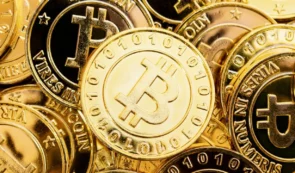Bitcoin: Expert Warns of Potential Downside as Fed Raises Interest Rates

Bloomberg Intelligence senior macro strategist Mike McGlone believes that Bitcoin (BTC) could face a significant headwind in the form of the Federal Reserve's interest rate policy.
McGlone recently analyzed the market and cautioned that if the Federal Reserve proceeds with raising interest rates to combat inflation, even amidst a potential recession, it could lead to a decline in high-risk assets such as Bitcoin.
According to McGlone, such a scenario could be a primary headwind for most risk assets, notably cryptocurrencies, and he recommends that buy-and-hold investors consider taking protective insurance.
McGlone also raised concerns about the possibility that crypto and equities could dip lower than they did during the bear markets of 2022. In particular, he noted that crypto and equity prices have bounced back since then, which could leave them vulnerable to resuming their 2022 downward trajectories.
McGlone highlighted the power of the stock market to decline sharply and suggested that Fed tightening, combined with elevated recession risks, are solid headwinds that could impact risk assets like Bitcoin.
To help investors navigate this uncertain environment, McGlone suggested that $25,000 is a key price level for Bitcoin. He believes that March will be a pivotal month that will indicate whether crypto will remain resilient despite the Fed’s tightening monetary policy.
READ MORE: World Economy on the Verge of Collapse – Robert Kiyosaki
According to McGlone, the risk versus reward could be tilting towards responsive, tactically focused sellers, with around $25,000 in Bitcoin marking pivotal resistance. He also noted that crypto assets need to show sustainable strength amid concerns that the 2022 risk-asset lows might not be bottoms.
McGlone’s analysis suggests that the Fed’s interest rate policy could be a significant driver of Bitcoin’s price in the coming months. With Bitcoin currently trading at $23,408, investors will be watching closely to see how it responds to these potential headwinds.
















